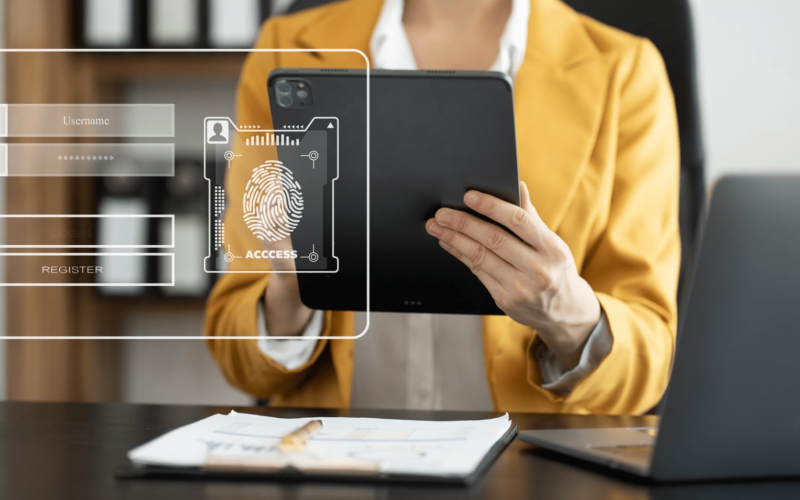Since ID scanning technology is the first stage in taking and evaluating document images, it is essential to the field of document recognition.
Since the ID scan supplies the raw data that later processing algorithms will understand, the quality of the ID scan has a significant impact on the accuracy and efficacy of document recognition systems.
The capabilities of document recognition systems have been greatly improved over time by developments in machine learning and image technology, allowing them to handle a greater range of documents more accurately.
Understanding ID Scanning
ID scanning is the process of taking a digital picture of an identity document—such as a passport or driver’s license—and analyzing it with specialist software. A growing number of businesses, including banking, retail, and travel, are using this technology.
So, how does ID Scanning work? Let me explain:
- Document Capture: The user uses a mobile device to scan their ID document or holds it up to a camera. After that, the program takes a crisp picture of the document.
- Image Analysis: Sophisticated algorithms are used to analyze the acquired image and extract important data, including:
- Personal Information: Name, date of birth, address, etc.
- Document Type: Driver’s license, passport, etc.
- Issuing Authority: Government agency responsible for issuing the document.
- Document Authenticity: The software can verify its authenticity by checking for specific security features and comparing it against a database of known valid documents.
- Data Verification: Once the information is extracted, it can be compared against other databases or systems to verify its accuracy. For example, a bank might check the scanned ID against a credit bureau’s database to prevent fraud.
Benefits of Using ID Scanning Tools
- Speed and Efficiency: ID scanning can significantly speed up the verification process, reducing customer wait times.
- Accuracy: The software can extract document information, minimizing errors and improving data quality.
- Security: ID scanning can help prevent fraud by verifying the authenticity of documents and detecting potential inconsistencies.
- Convenience: Users can easily scan their IDs using smartphones or other devices, making the process more convenient.
ID Scanning and Artificial Intelligence
Integrating machine learning techniques with artificial intelligence (AI) is one of the key developments in document recognition.
Because these technologies allow computers to learn from massive volumes of data and continuously improve their performance, they have completely changed the field.
Machine learning models are very good at managing a variety of formats and layouts because you can train them to identify intricate patterns and features inside documents.
As a result, there have been noticeable gains in text recognition accuracy and the capacity to handle texts of different levels of complexity.
People are using advanced image processing methods in conjunction with AI and machine learning to enhance the document recognition process while employing ID scans.
Various preprocessing techniques are used by modern document recognition systems to improve the quality of scanned images.
Clear and distortion-free photos are captured by the use of techniques including geometric correction, noise reduction, and image enhancement.
These preprocessing procedures are essential to obtaining high text extraction accuracy levels and guaranteeing the correctness of the information extracted from the documents.
ID Scanning and Other Industries
Beyond just technological advancements, ID scanning affects document identification in a big way for a variety of businesses.
For instance, in the financial industry, better ID scanning capabilities enabled document recognition systems can expedite procedures like loan approvals and account opening.
These systems eliminate errors and the requirement for human data entry by automating the extraction of information from identification documents and other documentation.
This boosts the overall client experience in addition to increasing operational efficiency.
Comparably, document recognition systems are being used more and more in the healthcare sector to handle insurance claims, patient data, and other crucial paperwork.
Processing these documents in a timely and accurate manner is essential to keeping healthcare operations running smoothly and guaranteeing that you are able to treat the patient data with the highest care.
ID scanning technology is essential to this process. It offers a dependable way to scan and digitize medical documents. Subsequently, you can use this with sophisticated document recognition algorithms for analysis and organization.
Future of ID Scanning
ID scanning has revolutionized how we verify identities, but its potential is far from exhausted.
As technology advances, we can expect to see even more innovative and secure methods of ID scanning in the future.
Biometric Integration
Combining ID scanning with biometric technologies is one of the most promising trends.
Features like fingerprint scanning, iris recognition, and facial recognition offer an additional degree of convenience and security.
Integrating biometric data with conventional ID data can result in a verification procedure that is more trustworthy and dependable.
Mobile ID Cards
Mobile ID cards are a result of the proliferation of cell phones. You can keep and retrieve these digital copies of the real IDs safely on devices as and when you want to.
In addition to being more convenient, mobile ID cards can lower the possibility of lost or stolen paperwork.
Blockchain Technology
Blockchain can play a crucial role in strengthening the security and privacy of ID scanning.
It can make it harder for hackers to access or alter data by putting ID data on a distributed ledger.
This can maintain the integrity of ID verification procedures and assist prevent identity theft.
AI-Powered Verification
People are using artificial intelligence (AI) to improve the accuracy and efficiency of ID scanning.
AI algorithms can quickly and accurately analyze documents, identifying potential inconsistencies or fraudulent information. This can help streamline verification processes and reduce the risk of errors.
Remote ID Verification
As technology advances, we may see a shift towards remote ID verification. This could involve using video conferencing or other digital tools to verify identities in real time without physical presence. This could be particularly useful for online transactions or remote services.
Bottom Line
In conclusion, ID scanning plays a critical role in the accuracy and efficacy of contemporary document recognition systems.
Document identification is becoming a highly useful tool in many different industries thanks to the ongoing improvements in AI, machine learning, and image technologies.
Future improvements that will influence document recognition and its uses will likely come as technology develops further.
You May Like Also:








